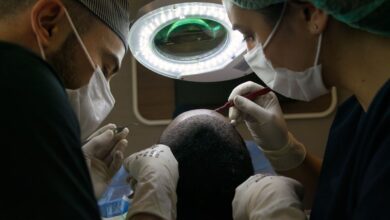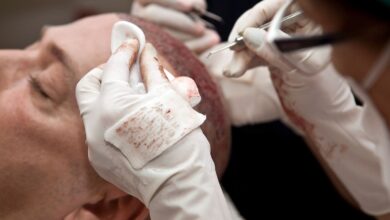How to Calculate the Number of Grafts Required for a Hair Transplant

If you’re considering a hair transplant, one of the most important things to understand is how many grafts you’ll need to achieve the desired results. In this article, we’ll go over the process of calculating the number of grafts required for a hair transplant, including what grafts are, how to determine the number needed, and factors that can affect the outcome.
Understanding Grafts
Before we get into the process of calculating the number of grafts required for a hair transplant, it’s important to understand what grafts are. A graft is a unit of hair follicles that are removed from a donor area and transplanted into a recipient area. These units can contain anywhere from one to four hairs, and the number of grafts needed for a hair transplant will depend on the extent of hair loss and the desired level of coverage.
Types of Grafts
There are two main types of grafts used in hair transplants: follicular unit grafts (FUGs) and follicular unit extraction (FUE) grafts. FUGs involve removing a strip of scalp from the donor area and then separating it into individual grafts. FUE grafts, on the other hand, involve removing individual follicles directly from the scalp using a special tool.
Calculating the Number of Grafts Required
When it comes to determining the number of grafts required for a hair transplant, there are a few factors to consider. These include the extent of hair loss, the desired level of coverage, the donor area, and the quality of the hair.
Examining the Extent of Hair Loss
The first step in calculating the number of grafts required is to examine the extent of hair loss. This will involve looking at the area of the scalp that needs to be covered and assessing how much hair will be needed to achieve the desired level of coverage. Depending on the severity of the hair loss, this may require anywhere from a few hundred to several thousand grafts.
Determining the Desired Level of Coverage
The next step is to determine the desired level of coverage. This will depend on factors such as the patient’s age, gender, and personal preferences. Some patients may want a completely full head of hair, while others may be satisfied with a more natural-looking level of coverage.
Assessing the Donor Area
Another factor to consider when calculating the number of grafts required is the donor area. This is the area of the scalp from which the grafts will be harvested. The quality and quantity of hair in this area will play a role in determining how many grafts can be harvested and transplanted.
Evaluating the Quality of the Hair
Finally, the quality of the hair is another important consideration. The thickness, texture, and color of the hair will all play a role in determining the number of grafts needed for a hair transplant.
Factors That Can Affect the Outcome
In addition to the factors mentioned above, there are a few other things that can affect the outcome of a hair transplant. These include the skill and experience of the surgeon, the type of grafts used, and the patient’s overall health.
Conclusion
Calculating the number of grafts required for a hair transplant is an important part of the process. By considering factors such as the extent of hair loss, the desired level of coverage, and the quality of the hair, patients can ensure they achieve the best possible results. If you’re considering a hair transplant, be sure to discuss the number of grafts needed with your surgeon.




